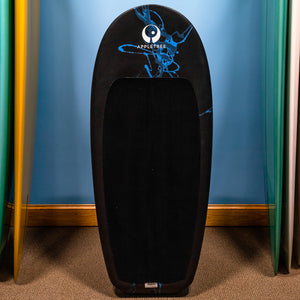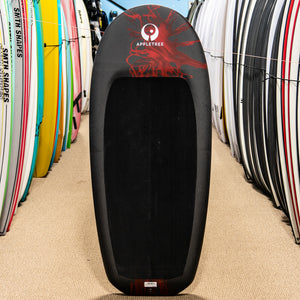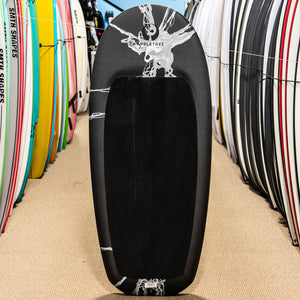Appletree Foilboards

Appletree Jazz
The Jazz, Appletree’s freestyle wing board.
Dimensions
4’7” x 23.00” | 50.00L
4’8” x 24.00” | 62.00L
4’9” x 25.00” | 75.00L
4’10" x 25.40” | 90.00L
The REAL Deal
Appletree Jazz
The Jazz, Appletree’s freestyle wing board.

Dimensions
4’7” x 23.00” | 50.00L
4’8” x 24.00” | 62.00L
4’9” x 25.00” | 75.00L
4’10" x 25.40” | 90.00L
The REAL Deal
Wing foiling might just be the fastest developing sport in the world at the moment and within just a few short years, it has progressed so much. What was once slowly cruising back and forth, is now flips, spins, riding waves, downwinding and racing too, and in everything from light wind to proper stormy conditions.
Likewise, the materials used have also evolved. At Appletree Surfboards we are at the forefront of design and construction and spend all season secretly testing and developing new ideas with our international crew of team riders.
We came to the conclusion that one wing board model does not cut it anymore. Dedicated shapes are required to fulfill the demands of high-end riders. So we’d like to introduce the JAZZ, Appletree’s freestyle wing board.
Key board features
Ultra-compact shape. A shorter more compact shape means less swing weight resulting in quicker turns and easier rotations. We moved the wide point moved forward making it possible to still get the required volume in the board. Through the sizes, the length only increases by one inch, while the volume jumps up 10L, keeping the length short throughout the range.
Front foot recess standing area. A new and innovative feature of the Jazz is the recessed deck. This way we can keep the standing position at the right angle to the foil and at the same time we can add more rocker and volume to the front part of the board. The recess also provides an excellent and stable platform to stand. With the standing area running off into the tail we eliminate any water pooling in the recessed deck.
Elongated planing surface. The bottom has a longer flat section around the foil connection. This vastly increases glide efficiency and improves low wind characteristics. The abrupt edge of the tail helps a lot with release which is very important when landing jumps, as you want that instant deflection off the water’s surface. The Jazz bounces back up like a skipping stone thrown across the water.
Soft frontal area. In the nose, the Jazz has an increased rocker, again to aid with deflecting of the surface. But the rails are also more rounded to further help eliminate sticking to the water. Moving down the board toward the tail the rails form an increasingly harder edge. This makes the Jazz feel really soft on landings.
Write a review, post a photo or join the discussion.



